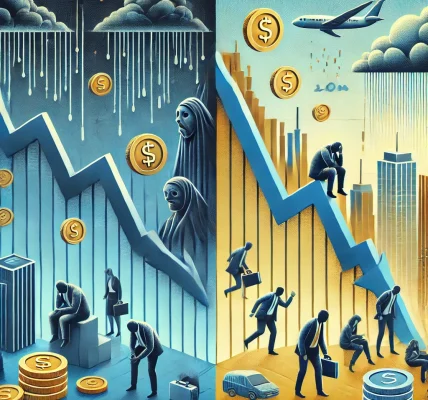Digital currencies, including cryptocurrencies, central bank digital currencies (CBDCs), and stablecoins, are transforming the global financial landscape. As governments, businesses, and individuals increasingly adopt digital assets, their economic implications are becoming more evident.
1. The Rise of Digital Currencies
- Bitcoin, Ethereum, and other cryptocurrencies have gained mainstream acceptance.
- Governments are exploring CBDCs (e.g., China’s Digital Yuan, India’s e-Rupee).
- Stablecoins offer a bridge between fiat and digital assets.
2. Positive Economic Impacts
✅ Financial Inclusion: Digital currencies help unbanked populations access financial services.
✅ Faster & Cheaper Transactions: Cross-border payments become instant and cost-effective.
✅ Decentralization & Transparency: Blockchain technology reduces fraud and increases trust.
✅ Reduced Dependence on Traditional Banking: Users can store value without intermediaries.
3. Challenges & Risks
⚠ Regulatory Uncertainty: Many governments struggle to define policies for digital assets.
⚠ Volatility: Cryptocurrencies like Bitcoin experience extreme price fluctuations.
⚠ Cybersecurity Threats: Digital wallets and exchanges are prone to hacking.
⚠ Impact on Traditional Banking: Banks may lose control over monetary systems.
4. The Role of Governments & Financial Institutions
- Regulation is Evolving: The U.S., EU, and China are developing cryptocurrency laws.
- CBDCs as a Response: Countries are launching CBDCs to retain monetary control.
- Adoption in Business: Tesla, PayPal, and Visa now accept crypto payments.
5. The Future Outlook
🚀 Mainstream Adoption: More businesses and countries will integrate digital currencies.
🚀 Stable & Regulated Markets: Governments will introduce legal frameworks for safety.
🚀 Integration with AI & Blockchain: Smart contracts and AI-driven finance will revolutionize transactions.
Conclusion
Digital currencies are reshaping the global economy by offering efficiency, accessibility, and innovation. However, governments, businesses, and investors must navigate challenges like regulatory uncertainty and security risks to unlock their full potential. The future of finance is digital—are we ready for the transformation?




